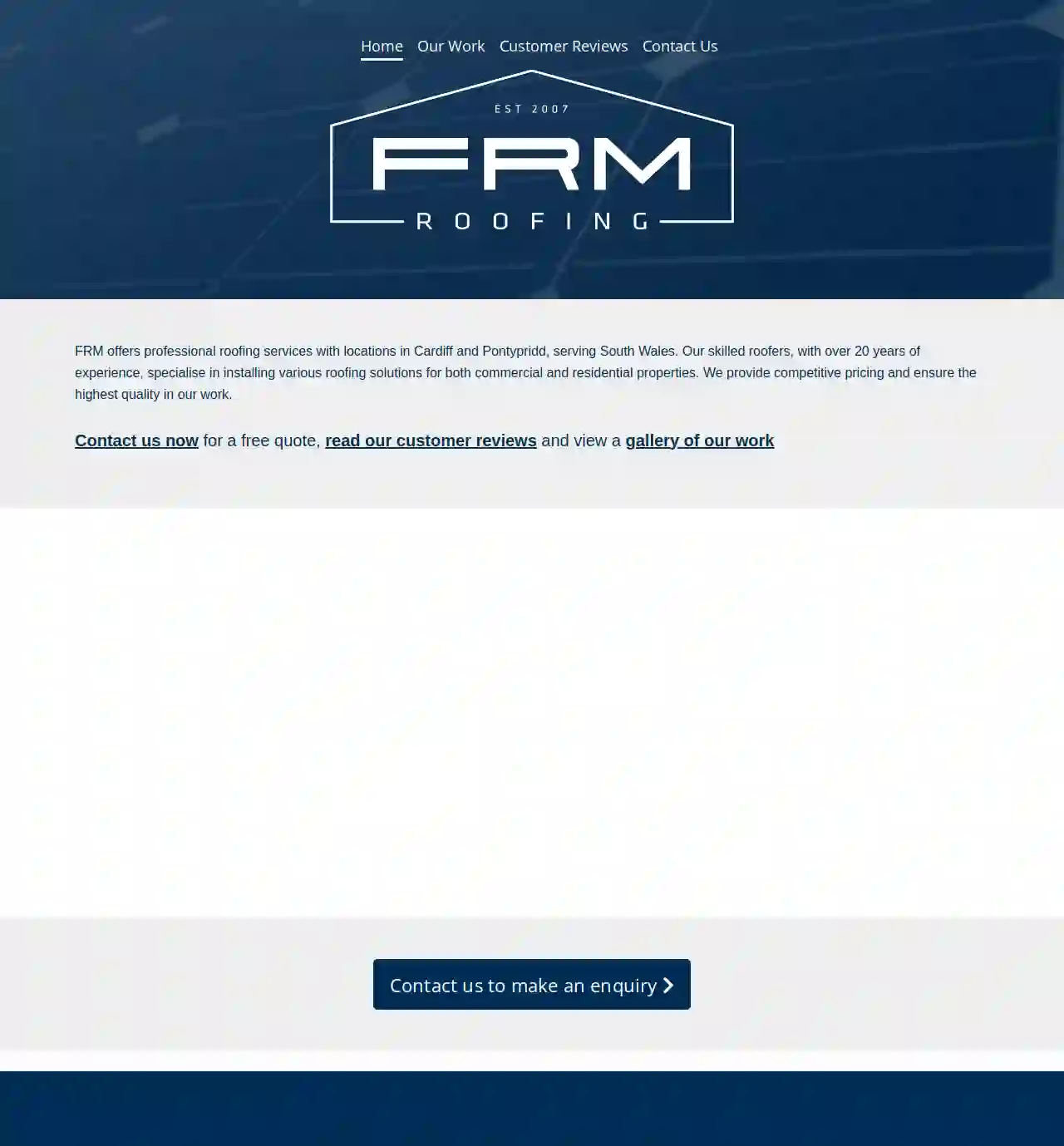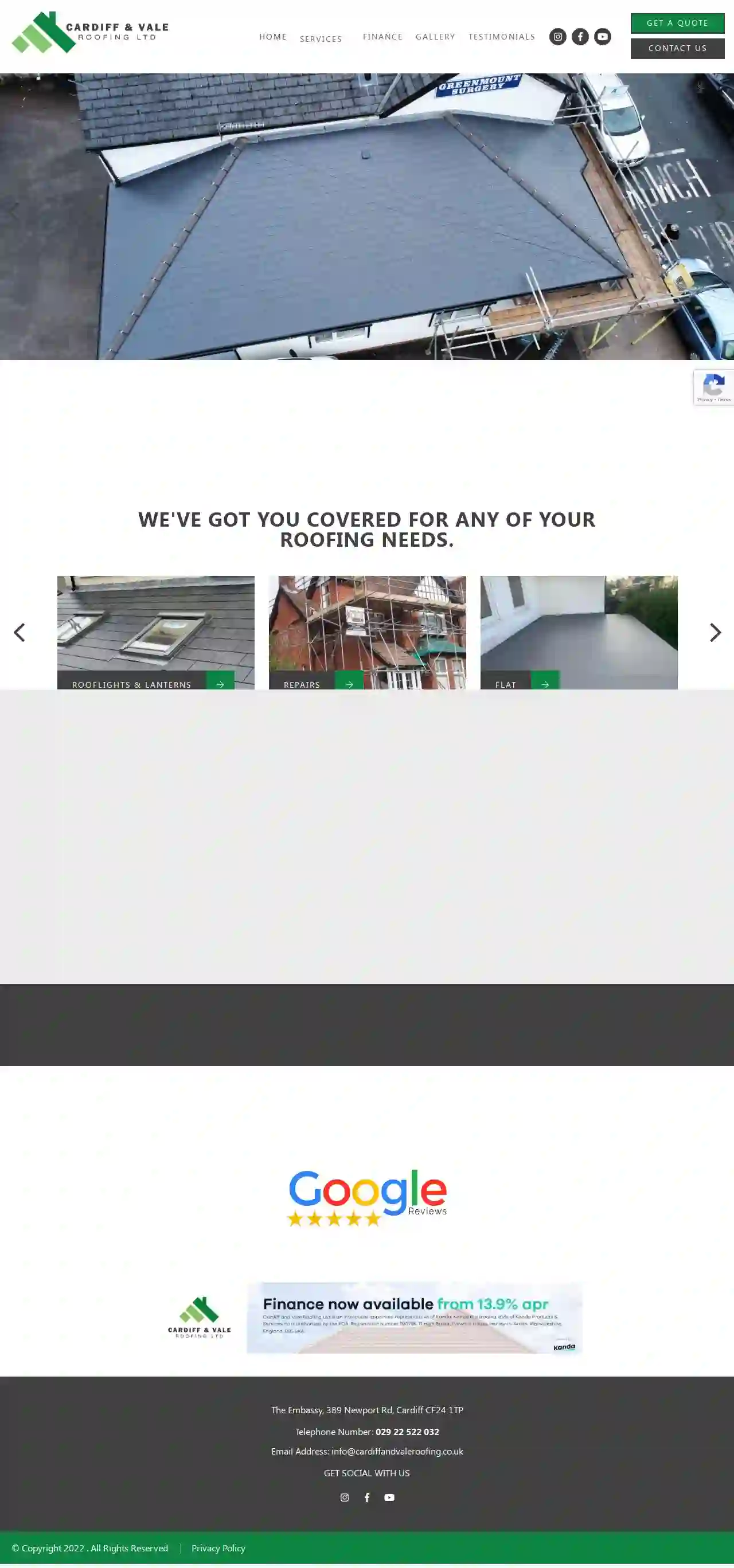Roofing Companies The Mumbles
Find the best Roofers in The Mumbles
Get 3 FREE Roofing Company quotes for your project today! Compare profiles, reviews, accreditations, portfolio, etc... and choose the best deal.

Devonshire Roofing Services
4.36 reviewsGBDevon Roofing Network is a group of roofing professionals serving Devon, offering a wide range of residential and commercial roofing services. They specialize in roof repairs, flat roofing, guttering, fascias & soffits, and more. The network emphasizes the importance of a well-built roof and the need for timely repairs to prevent further damage. They provide free quotes and offer various roofing materials, including felt, slate, fiberglass, and EPDM rubber. Devon Roofing Network encourages potential customers to contact them through their website form for a prompt response and a quote.
- Services
- Why Us?
- Gallery
Get Quote
SPS Roofing Ltd
522 reviewsUnit 17, The Old Stables, Newcourt Barton, Clyst Road, Topsham, Exeter, Devon, EX3 0DB, GBSPS Roofing Ltd are fully qualified Exeter roofers in Devon with over 30 years of experience providing domestic, commercial and industrial roofing services across South West England. We strive to become one of the leading roofing companies through ensuring complete client satisfaction on every single project undertaken. Our team of roofers have over 30 years experience within all domestic, commercial and industrial markets with all the necessary qualifications. To give our customers peace of mind in knowing they have chosen professional roofing contractors we have Public Liability Insurance up to £5,000,000 and are Bauder Approved Contractors, SMAS approved, Constructionline Gold Members, CSCS certified, CITB approved, and registered with NFRC. Furthermore, warranties on workmanship and materials for up to 25 years can be given to demonstrate how passionate we are about creating long lasting durable systems.
- Services
- Why Us?
- Accreditations
- Gallery
Get Quote
FRM Roofing
56 reviewsRhondda, GBFRM offers professional roofing services with locations in Cardiff and Pontypridd, serving South Wales. Our skilled roofers, with over 20 years of experience, specialise in installing various roofing solutions for both commercial and residential properties. We provide competitive pricing and ensure the highest quality in our work.
- Services
- Why Us?
- Gallery
Get Quote
Cardiff and Vale Roofing LTD
4.974 reviewsThe Embassy, 389 Newport Rd, Cardiff, GBWe've got you covered for any of your Roofing needs. Cardiff and Vale Roofing are an independent roofing company based in Cardiff supporting the City of Cardiff and surrounding areas. Cardiff and Vale Roofing have over 70 years combined experience in all manner of Roofing and all work is carried out to the highest standard. We pride ourselves on offering the best service to our customers. Cardiff and Vale Roofing is always competitive on price and will provide you with a free, no obligation quote. Contact us today to discuss your roofing requirements.
- Services
- Why Us?
- Gallery
Get Quote
A silcox roofing services
52 reviewsGBSouth Wales Roofing Network is a network of roofing professionals serving the South Wales region. We offer a wide range of roofing services for both domestic and commercial properties, including roof repairs, flat roofing, pitched roofing, fascias and soffits, and more. Our members are experienced and qualified roofers who are committed to providing high-quality workmanship and customer service. We understand that your roof is a vital part of your home or business, and we take pride in ensuring that it is properly protected. Whether you need a small repair or a complete roof replacement, our team can help. Contact us today for a free quote.
- Services
- Why Us?
- Accreditations
- Our Team
- Testimonials
- Gallery
Get Quote
Jones K Roofing
51 reviewsGBAt South Wales Roofing Network, our members are dedicated to providing a comprehensive range of roofing services across South Wales. Whether you need roof repairs, flat roofing, pitched roofing, fascias and soffits, or any other roofing-related service, our experienced and qualified team can handle it all. We understand the importance of a well-built roof for your home or business, and we strive to deliver exceptional workmanship and customer satisfaction. Our members are committed to using high-quality materials and the latest roofing techniques to ensure long-lasting and reliable results. We cover a wide range of areas throughout South Wales, so no matter where you are located, we can provide you with the roofing solutions you need. Contact us today to receive a free quotation and let us take care of your roofing needs.
- Services
- Why Us?
- Accreditations
- Gallery
Get Quote
Westcountry Slate Supplies Ltd
56 reviewsUnits 2, 3 & 4, Treviskey, Lanner, Redruth, Cornwall, TR16 6AS, GBWelcome to Westcountry Slate Website. Westcountry Slate is a family-owned importer of Natural Roofing slate, Flooring slate and Cills slate. We have been providing high-quality products to our customers for over 15 years. Our team is dedicated to providing excellent customer service and ensuring that our customers and distributors have access to our wide range of Natural Slate and Roofing Products. We offer a wide range of products, including Natural slate from Spain & Brazil, Concrete Tiles and Accessories from some of the best known manufacturers and much more. Our products are sourced from top manufacturers to ensure that our customers & distributors are getting access to a wide range of products.
- Services
- Why Us?
- Gallery
Get Quote- A.
A.M.T Roofing Penarth
4.746 reviews123 Main Street, Suite 100, Los Angeles, 90210, GBAMT Roofing is a locally owned and operated roofing company serving the greater [City, State] area. We specialize in residential and commercial roofing services, including new roof installations, roof repairs, and roof maintenance. Our team of experienced and certified roofers is dedicated to providing high-quality workmanship and exceptional customer service. We use only the best materials and techniques to ensure that your roof is protected for years to come. Contact us today for a free estimate.
- Services
- Why Us?
- Gallery
Get Quote 
Stewart kemp roofing solutions
4.715 reviewsTeignmouth, GBStewart Kemp Roofing Solutions is a specialist independent flat roofing, tiling and slate company that has quickly built up an enviable reputation as one of the most expert roofers in the Teignbridge and Devon area.We pride ourselves on our commitment to provide a professional, reliable and speedy service at all times, taking into account the customer’s busy schedule and their unique, personal demands. Quality Services Known for our excellent standard of work, with years of experience in all areas of roofing, you can rest assure you are in safe hands. Skilled Workforce Trusted, fully qualified, and experienced roofers - we pride ourselves on our fine workmanship & professionalism. No job is too big or small! Professional Tools The right roofing tools are an essential requirement for any job, and we guarantee our materials & equipment are as high quality as our services. Affordable Prices Whether it is a simple repair, a full replacement, or even a cracked tile, with a free estimate we’ll find the right, affordable solution for you.
- Services
- Why Us?
- Testimonials
- Gallery
Get Quote
LBS Builders Merchants Port Talbot
4.443 reviewsLBS Business Centre, Parc Amanwy, Ammanford, SA18 3FE, GBWe use cookies to make your experience better. To comply with the new e-Privacy directive, we need to ask for your consent to set the cookies. Read our policy. Leading Independent Builders Merchant For 90 Years. The LBS Group. Blocks. Fully Stocked. Shop Timber. Click & Collect. Browse and Buy >>. Sign up for an LBS Account today! Set up an LBS Account and make the most of the benefits available for trade & DIY customers. Account Benefits: Credit & Cash Account, 500 local, reputable staff, Same or next day delivery, Access to 50 branches, Award-winning company, Up to 7,000 lines available.
- Services
- Why Us?
- Accreditations
- Our Team
- Testimonials
- Gallery
Get Quote
Over 12,314+ Roofers on our platform
Our roofing contractors operate in The Mumbles and surroundings!
Roofyng.co.uk has curated and vetted the Best Roofers in The Mumbles. Find the most reliable pro today.
Frequently Asked Questions About Roofing Companies
- Age: If your roof is nearing or exceeding its expected lifespan, it's wise to consider replacement.
- Multiple Leaks: Several leaks or leaks that reappear after repairs suggest a widespread problem.
- Extensive Damage: Large areas of damaged, missing, or deteriorated roofing materials might be too costly or difficult to repair effectively.
- Sagging or Structural Issues: Sagging, deflection, or other structural issues indicate a compromised roof that needs replacement.
- Granule Loss (Asphalt Shingles): Significant granule loss indicates weathering and reduced protection.
- Curling or Buckling Shingles: Signifies age or improper ventilation.
- Increased Energy Bills: A poorly insulated roof can lead to higher heating and cooling costs.
- Ventilation: Soffit vents provide intake ventilation, allowing fresh air to enter the attic and regulate temperature and moisture.
- Aesthetics: It creates a finished look to the roof's underside.
- Pest Control: A properly sealed soffit prevents pests like birds and squirrels from nesting in the attic.
- Safety First: Avoid going onto the roof during a storm, as it's dangerous.
- Document the Damage: Take photos and videos of the damage for insurance purposes.
- Contact Your Insurance Company: Report the damage to your insurance company as soon as possible to initiate a claim.
- Temporary Repairs: If safe, address any immediate leaks using buckets or tarps to minimize further damage.
- Contact a Roofing Contractor: After the storm, have a qualified roofing contractor inspect the roof and provide a repair estimate.
What are the signs that my roof needs to be replaced?
How often should I clean my gutters?
What is a soffit, and why is it important for my roof?
What should I do if my roof is damaged in a storm?
What are the signs that my roof needs to be replaced?
- Age: If your roof is nearing or exceeding its expected lifespan, it's wise to consider replacement.
- Multiple Leaks: Several leaks or leaks that reappear after repairs suggest a widespread problem.
- Extensive Damage: Large areas of damaged, missing, or deteriorated roofing materials might be too costly or difficult to repair effectively.
- Sagging or Structural Issues: Sagging, deflection, or other structural issues indicate a compromised roof that needs replacement.
- Granule Loss (Asphalt Shingles): Significant granule loss indicates weathering and reduced protection.
- Curling or Buckling Shingles: Signifies age or improper ventilation.
- Increased Energy Bills: A poorly insulated roof can lead to higher heating and cooling costs.
How often should I clean my gutters?
What is a soffit, and why is it important for my roof?
- Ventilation: Soffit vents provide intake ventilation, allowing fresh air to enter the attic and regulate temperature and moisture.
- Aesthetics: It creates a finished look to the roof's underside.
- Pest Control: A properly sealed soffit prevents pests like birds and squirrels from nesting in the attic.
What should I do if my roof is damaged in a storm?
- Safety First: Avoid going onto the roof during a storm, as it's dangerous.
- Document the Damage: Take photos and videos of the damage for insurance purposes.
- Contact Your Insurance Company: Report the damage to your insurance company as soon as possible to initiate a claim.
- Temporary Repairs: If safe, address any immediate leaks using buckets or tarps to minimize further damage.
- Contact a Roofing Contractor: After the storm, have a qualified roofing contractor inspect the roof and provide a repair estimate.